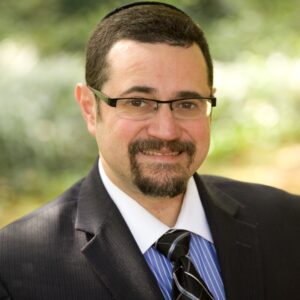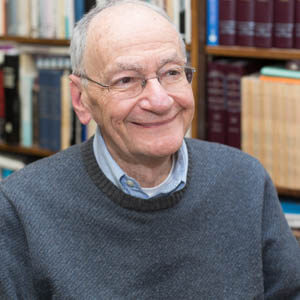Search Results
Back to JTS Torah Online's Main page
The Relevance of Tish’ah Be’av
Aug 2, 2000 By Joshua Heller | Commentary | Devarim | Tishah Be'av
Next week, Jews around the world will observe Tisha B’av, mourning the destruction of the First and Second Temples and commemorating many other tragedies of Jewish history. The literary centerpiece of the holiday is the book of Lamentations, Eikha, which mourns the destruction of the First Temple in Jerusalem and the exile of the Jewish people from its land. The book’s refrain is the word “Eikha,” asking the question “How could it be?”–“How could it be that the teeming city lay desolate, that God rejected God’s people?” (Lam 1:1, 2:1, 4:1, 4:2)
Read More
The Treasure of Torah
Jul 30, 2000 By Ismar Schorsch | Commentary | Masei | Mattot
Lists are the most rudimentary type of historical evidence. To us they are lifeless and repetitive, devoid of narrative and significance. Yet, for the historian endowed with imagination, they often become the building blocks for first-rate economic, social or political history. Lack of meaning lies in the eyes of the beholder.
Read More
Between Zealotry and Peace
Jul 22, 2000 By Matthew Berkowitz | Commentary | Pinehas
This week, we read the first of three “haftarot of rebuke” which precede Tisha B’av. Even though this Haftorah is ordinarily associated with Mattot, Mattot is read as the first half of a double–portion this year. We read this haftorah a week “early” to be sure we don’t miss it.
Read More
Listening to Our Enemies
Jul 8, 2000 By Matthew Berkowitz | Commentary | Korah
On Motzei Shabbat, June 24, 2000, the Conservative synagogue of the Ramot neighborhood in Jerusalem, Kehillat Ya’ar Ramot, was set ablaze. According to the New York Times (Monday, June 26, 2000) this hateful act also involved the defacement of the synagogue “with grafitti that labeled it a place unworthy of worship, and said that a yeshiva–trained Jew should not be there.” Numerous eyewitnesses saw “apparently religious men, wearing black velvet skullcaps and white shirts, fleeing as the flames raged.” Prime Minister Ehud Barak rightly called this tragic incident “an awful act that causes every Jew to shudder.” Indeed, the flames which marred this synagogue were ignited by sinat hinam, baseless hatred a painful, incomprehensible hatred all too familiar to the Jewish people.
Read More
A Matter of Perspective
Jul 1, 2000 By Matthew Berkowitz | Commentary | Shelah Lekha
Six years ago, while studying in Israel, a close friend, my father and I decided to make a two day camping trip to Eilat and then to St. Catherine’s Monastery which sits at the foot of what Christian tradition believes to be Mt. Sinai. For me, this was my second pilgrimage to this extraordinary site; my first hike up Jebel Musa (Mt. Sinai) had taken place two years earlier. And so as the experienced one, I planned out the hike such that we would begin hiking from the monastery at about four in the afternoon – enough time to avoid the intense heat of the mid–day sun and to also allow plenty of time for us to reach the summit in time to see the sun set. Along the trek, we were treated to magnificent vistas of desert colors playing off the mountains comprising the Sinai Desert.
Read More
Perception and Practice
Jul 1, 2000 By Matthew Berkowitz | Commentary | Shelah Lekha
Six years ago, while studying in Israel, a close friend, my father and I decided to make a two day camping trip to Eilat and then to St. Catherine’s Monastery which sits at the foot of what Christian tradition believes to be Mt. Sinai. For me, this was my second pilgrimage to this extraordinary site; my first hike up Jebel Musa (Mt. Sinai) had taken place two years earlier.
Read More
“May the Lord Protect and Defend You.”
Jun 17, 2000 By Ismar Schorsch | Commentary | Naso
In older Jewish cemeteries, you will often come upon a tombstone decorated with a pair of hands. They are often juxtaposed near the top, arched in a triangle with fingers noticeably apart. The symbol of hands positioned to administer the priestly blessing designates the grave of a Kohen, a putative descendant of Aaron, the first high priest. As ancient Jewish art often does, the image embodies midrash in visual form. And since the priestly benediction is the centerpiece of this week’s parashah (6:24–26), I wish to reflect on the far–reaching meaning of this midrash.
Read More
Midrash and Monticello
Jun 3, 2000 By Matthew Berkowitz | Commentary | Bemidbar
A few years ago, my wife and I took a trip to Monticello, Jefferson’s estate in Virginia. And while the splendor of the estate is reflected by a magnificently furnished mansion, extensive library, and extraordinary mountain backdrop, I found myself impressed by something far less grand: the vegetable gardens. They were exquisitely arranged. Each vegetable plant, as well as each species, had its place in the garden. Beefsteak tomatoes were planted in a wholly separate row from the plum tomatoes; hybrid peas blossomed in splendid isolation from the green beans; and red cabbage sprouted at a comfortable distance from its green counterpart. Every vegetable had its proper place and marker, such that each could easily be identified.
Read More
Behukkotai’s Challenge to Us
May 27, 2000 By Matthew Berkowitz | Commentary | Behukkotai
Blessing comes to fruition through journey. The journey may be as simple as lighting Shabbat candles or it may be as complicated as leaving the comfort of one’s home to discover new worlds. Either way, that which is familiar is left behind and a new reality challenges one to grow and thus to earn God’s Blessing. Such is the challenge of this week’s parasha.
Read More
The Origins of Sacrifice
May 13, 2000 By Ismar Schorsch | Commentary | Emor
When our three children were still quite young, we did not hesitate to let them masquerade for Halloween and go out to “trick or treat.” For security reasons, we would often go with them. Part of the evening’s fun was handing out the candy at our own door to those who came seeking a treat. The Orthodox day school which our children attended at the time frowned on the practice by insisting that Halloween was once a Christian religious holiday. The sudden display of pedanticism always amused me because what was left of Halloween in our day is utterly bereft of any sacred content. Like Valentine’s Day, it had been completely desacralized, and most American Jews participated in the joy of both days in some fashion. Time had severed the modern secular meaning of each from its medieval religious moorings. The Orthodox assault was not driven by a sudden appreciation for critical scholarship but by an overriding concern for keeping Jews socially apart as much as possible.
Read More
Life’s Triumph Over Death
Apr 8, 2000 By Ismar Schorsch | Commentary | Tazria
Each morning we begin our prayers with a remarkable expression of gratitude.
Read More
Purim Vs. Va-yikra: Order Vs. Chaos
Mar 18, 2000 By Matthew Berkowitz | Commentary | Vayikra | Purim
This week we begin our reading of the book Va-yikra, Leviticus, which details the rites of the sacrificial cult, the dynamics of ritual pollution and purification, and the path toward priestly holiness. As a number of scholars have commented, Leviticus is essentially about order. For bible scholar, Everett Fox, Leviticus describes, “a realm of desired order and perfection, a realm in which wholeness is to reign, in which anomaly and undesired mixture are not permitted, and in which boundaries are zealously guarded” (Fox, The Five Books of Moses, 501). This sense of ordered perfection becomes all the more striking in light of our reading of Megillat Esther next Monday evening. At its core, the Scroll of Esther is about chaos and disorder – a world turned upside down. Which is more authentically Jewish? And how are we to understand the juxtaposition of these world views?
Read More
Lovers of Books
Mar 11, 2000 By Ismar Schorsch | Commentary | Pekudei
In my office hangs a haunting painting (courtesy of the Jewish Museum) by the immigrant artist Moses Soyer. Done in 1934, the painting bears the name “The Lover of Books” and consists of a full length portrait of a smallish, elderly and shabbily dressed man with a large book under his left arm. It could well be a tribute to Soyer’s father who in Russia had been a maskil, a purveyor of Jewish and general culture in Hebrew. The bust on the bookcase in the background suggests a man of broad horizons, though quintessentially Jewish in appearance. The dark shades of the painting and the contrast between the sturdy tome and the fragile figure convey not only a sense of precariousness, but also the power of the book. Love of learning holds the key to the mystery of Jewish survival. What finer emblem could there be to the mission of the Seminary than Soyer’s evocative work!
Read More
A Circle of Obligation
Mar 3, 2000 By Matthew Berkowitz | Commentary | Vayak-hel
In last week’s parasha, Ki Tissa, we heard of the Israelites’ ultimate act of disloyalty – the creation and worship of a Golden Calf. In contrast, this week’s parasha, Va–Yakhel, paints a portrait of absolute devotion. Only three chapters after the Golden Calf episode, the Israelites are now engaged in one of the greatest acts of worship: building a tabernacle which will house the Presence of God. This week’s loyalty stands in stark contrast to last week’s disloyalty. These two episodes, however, not only puzzle the reader with their disparity but serve to shed light on each other.
Read More
Shabbat: A Temple in Time
Feb 26, 2000 By Ismar Schorsch | Commentary | Ki Tissa
If “seeing is believing,” the converse of that adage is surely “out of sight out of mind.” There is something fragile about a faith predicated on sight. Remove its visible attendants and it soon collapses. What did Shakespeare say of another human state? “Love is not love which alters when it alteration finds, or bends with the remover to remove.” Constancy in love or faith soars above the transient.
Read More
Moving Towards Perfection
Feb 5, 2000 By Ismar Schorsch | Commentary | Mishpatim
The controversies of one era are not necessarily those of another. When a leader of the Southern Baptists can declare on the Larry King Show that the soul of a Jew is still destined to burn in hell, we are jarringly thrown back to the bigotry of an earlier era bloodied by religious persecution. Progress can be measured by the once bitterly contested issues that no longer get a rise out of us. This is the reason I continue to enjoy looking at the Hertz Humash. Produced in England under the leadership of Chief Rabbi Joseph H. Hertz in the third and fourth decades of the twentieth century, it resonates with the polemics of an era when much of the enlightened world, not to speak of the benighted, still harbored grave doubts about the religious worth of Judaism. Our adversaries often determine the emphasis of our thought.
Read More
Suffering for the Sins of Others
Jan 29, 2000 By Matthew Berkowitz | Commentary | Yitro
Parashat Yitro is known for the appearance of the Ten Commandments, aseret ha-dibrot, the ten revealed “words” of God. While the majority of demands are straightforward and theologically tenable, a qualification in the third commandment has left generations of Jews wrestling with its implications. God declares, “You shall not make for yourself a sculptured image, or any likeness of what is in the heaven above, or on the earth below… You shall not bow down to them or serve them. For I the Lord your God am an impassioned God, visiting the guilt of the parents upon the children (poked avon avot al banim), upon the third and upon the fourth generations of those who reject Me, but showing kindness to the thousandth generation of those who love Me and keep My commandments” (Exodus 20:4-6). How are we to understand this biblical concept of vicarious punishment? Why should seemingly innocent children and grandchildren suffer for the mistakes of their parents and grandparents? A number of brilliant voices from the tradition shed light on our query.
Read More
Individual and Collective Formation of Nationhood
Jan 22, 2000 By Matthew Berkowitz | Commentary | Beshallah
At the heart of Parashat Beshalah lies the triumphant poem, Shirat HaYam, the Song of the Sea. Having successfully crossed the Reed Sea and witnessed the downfall of Pharaoh’s horsemen, Moses and the children of Israel burst out into an outpouring of praise for the God who freed them from the bonds of slavery. This biblical poem provides the historical transition from Pharaoh’s oppressive rule to God’s glorious kingship. In its biblical context, this song marks the emergence of a nation — from the mixed multitude that leaves Egypt to the people who encounter God at Sinai.
Read More
The Right to Question
Jan 15, 2000 By Ismar Schorsch | Commentary | Bo | Pesah
The custom at many a Seder table is to have the youngest child recite the famous four questions which open the evening’s dialogue. Often the child, still several years away from knowing how to read, recites from memory, having learned them by heart in pre-school. The performance is more than a moment of pride for parents and grandparents. It is a taste of the spirit of Judaism which the child will only come to appreciate years later. Judaism is a religion that not only permits but encourages us to ask questions. Because things are sacred does not mean that we have forfeited the right to think for ourselves.
Read More
Meaning in the Torah’s Layout
Dec 25, 1999 By Ismar Schorsch | Commentary | Vayehi
Everything is susceptible to midrashic interpretation, including the physical appearance of the Torah text. As you know from aliyot to the Torah, the text of the Torah scroll is not divided onto chapters or verses, as it is in our printed edition of the Torah, but rather into units separated from each other by empty space. When the Torah scroll is raised to be bound and the text is turned to the congregation for viewing, these breaks in the written script stand out conspicuously. The ancient text contains neither vowels nor punctuation, only words arranged in passages of different sizes defined by their context and set off by gaps in the writing.
Read MoreSUBSCRIBE TO TORAH FROM JTS
Our regular commentaries and videos are a great way to stay intellectually and spiritually engaged with Jewish thought and wisdom.




